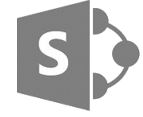Does the world really need another post on upgrading to SharePoint 2016?
Perhaps, perhaps not. One thing we definitely couldn’t find out there was a balanced post. A quick google of Upgrade to SharePoint 2016 tends to capture a lot of articles at either extreme, from the “TechNet super technical” article at one end to the marketing “Hey why don’t you let us upgrade SharePoint for you” . Not much in between, and we love a gap in the market don’t we!
So what does this post cover?
- Who is this post aimed at ?
- When would be a good time to upgrade?
- Why Upgrade?
- Why Not – Migrate to Cloud SharePoint?
- How to Upgrade ?
Who is this post aimed at?
Organisations running earlier versions of SharePoint on-premises. This could be SharePoint 2003,2007,2010, or 2013 – Foundation, Standard or Enterprise.
There is an upgrade path for each of these versions and editions each with its own technical and even licencing facets. There is no SharePoint 2016 foundation for example.
When would be a good time to upgrade?
Starting now really. The SharePoint “Trinity” of SharePoint 2016, SQL Server 2016 and Windows 2016 are now all available.
Why Upgrade?
New Features
There is quite a bit of new stuff in 2016.
https://technet.microsoft.com/en-us/library/mt346121(v=office.16).aspx
Development updates
New SharePoint Development techniques such as the SharePoint framework are planned for 2016, align it with cloud SharePoint but are not likely to be made available for earlier versions.
In short an upgrade will allow you to develop better solutions which will last longer and be more compatible.
Path to the cloud
The hybrid capabilities of SharePoint 2016 and development updates ease your eventual route to the cloud.
Support
There are a lot of production platforms out there reliant on Microsoft software which is already in extended support or even out of support. It’s worth looking at what version of SharePoint, SQL Server and Windows Server you are running and familiarising yourself with the support / lifecycle position.
You can do this here;
https://support.microsoft.com/en-us/lifecycle/search
Why Not – Migrate to Cloud SharePoint?
Cloud vs. on-premises is a big discussion which we are not fully exploring here.
A core consideration in respect to SharePoint when you are an existing user is customisation. Any server side customisation which you are using (and was the norm in earlier SharePoint versions) won’t work in the cloud without major revision. Moving to SharePoint 2016 Server, however, does not carry this restriction.
How to Upgrade ?
Upgrade Plan
Yup definitely going to need one of those, and a good one to.
What to put in the plan?
Communication
Key stakeholders, users, IT teams – This is going to impact everyone involved in SharePoint.
Training
Use and administration of the platform is going to be different post upgrade.
Customisation
Customisation (solutions) will need to be loaded and working on the new version.
You are going to want to test any customisation but branding changes, specifically master page changes, are not going to work without modification with the SharePoint 2016 user experience.
3rd Party
Establish clarity on the effect of an upgrade on any 3rd party products.
Approach
In place upgrade or side-by-side?
Content
If content is being moved as is then the standard out of the box process will do this.
If content is being re-organised then this infers a custom upgrade process or tool will be used.
SharePoint 2016 will upgrade content from SharePoint 2013. If you are upgrading from 2010 or 2007 you will need a temporary SharePoint server to carry out each upgrade you previous skipped. Alternatively a custom upgrade process or tool could be used.
Downtime
Downtime will need to be communicated and planned in or mitigated.
The amount of downtime is often determined by the amount of and age (version) of content currently in SharePoint which in turn affects the upgrade process duration.
Service Applications
SharePoint service applications and their correspondent configuration and state databases will need to be rebuilt or upgraded.
Resourcing
Depending upon the complexity of your current implementation you may need to resource infrastructure (SharePoint, SQL, Server builds), development, testing, training, change management, project management and execution.
You might choose to out source, in source or do it yourself for either the whole project or a particular element. For example you might wish to DIY the infrastructure and soft skills but outsource development updates to your original supplier.
Execution
Who does what when and in which order.
 |
|
 |
|
 |
|
 |
|
 |
|
 |
Middle East | Global |
|
Middle East | Global |

